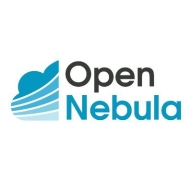

OpenNebula and Nutanix Cloud Manager are competing in cloud management solutions. Nutanix Cloud Manager has the upper hand owing to its feature richness, but OpenNebula maintains a lead with its pricing advantage.
Features: OpenNebula offers open-source flexibility, streamlined resource management, and seamless customization for adaptable environments. Nutanix Cloud Manager delivers advanced multi-cloud management, robust hyper-converged infrastructure support, and comprehensive analytics tools, making it ideal for large-scale operations.
Room for Improvement: OpenNebula could enhance its ease of deployment and reduce the technical expertise required. It could also benefit from expanding its feature set to rival more comprehensive solutions. Nutanix Cloud Manager might improve by lowering initial costs and refining user interface intuitiveness further. Additionally, capitalizing on open-source aspects could enhance its appeal.
Ease of Deployment and Customer Service: Nutanix Cloud Manager is known for effortless deployment processes and exceptional customer service, aiding in smoother cloud transitions. In contrast, OpenNebula, while providing substantial control and reliability, may need more technical skills but compensates with strong community and professional support systems.
Pricing and ROI: OpenNebula offers a budget-friendly solution with reduced initial setup expenses, ensuring promising ROI due to its open-source nature. On the other hand, Nutanix Cloud Manager might involve higher upfront costs; however, it justifies the investment with significant ROI through its extensive management capabilities and automation, especially suited for larger enterprises.
| Product | Market Share (%) |
|---|---|
| Nutanix Cloud Manager (NCM) | 3.9% |
| OpenNebula | 3.7% |
| Other | 92.4% |


| Company Size | Count |
|---|---|
| Small Business | 25 |
| Midsize Enterprise | 23 |
| Large Enterprise | 64 |
| Company Size | Count |
|---|---|
| Small Business | 7 |
| Midsize Enterprise | 6 |
| Large Enterprise | 3 |
Nutanix Cloud Manager streamlines hybrid cloud management by offering centralized control, automation, and workload optimization across platforms. It improves operational efficiency while reducing IT management complexity.
Nutanix Cloud Manager is designed for comprehensive hybrid cloud governance, providing tools for virtualization, resource allocation, and compliance. Its features include one-click upgrades, dynamic dashboards, and the seamless automation of tasks through X-Play. Users can efficiently manage virtual machines, ensure secure storage, and enhance productivity with predictive monitoring. Self-service capabilities allow users to reserve resources easily, while central management via Prism Pro and automated reports enhance oversight and decision-making. Challenges include UI simplicity, pricing transparency, and licensing efficiency, with users seeking improvements in VM organization, blueprint customization, and collaborative support for hybrid environments.
What important features define Nutanix Cloud Manager?Nutanix Cloud Manager finds utility in industries requiring robust hybrid cloud strategies like finance, healthcare, and manufacturing. It excels in centralizing management for secure and compliant operations, optimizing workloads, and providing scalable solutions for resource allocation and compliance monitoring, thus enhancing cloud operations in diverse markets.
OpenNebula provides the most simple but feature-rich and flexible solution for the comprehensive management of virtualized data centers to enable private, public and hybrid IaaS clouds. OpenNebula interoperability makes cloud an evolution by leveraging existing IT assets, protecting your investments, and avoiding vendor lock-in.
OpenNebula is a turnkey enterprise-ready solution that includes all the features needed to provide an on-premises (private) cloud offering, and to offer public cloud services.
We monitor all Cloud Management reviews to prevent fraudulent reviews and keep review quality high. We do not post reviews by company employees or direct competitors. We validate each review for authenticity via cross-reference with LinkedIn, and personal follow-up with the reviewer when necessary.